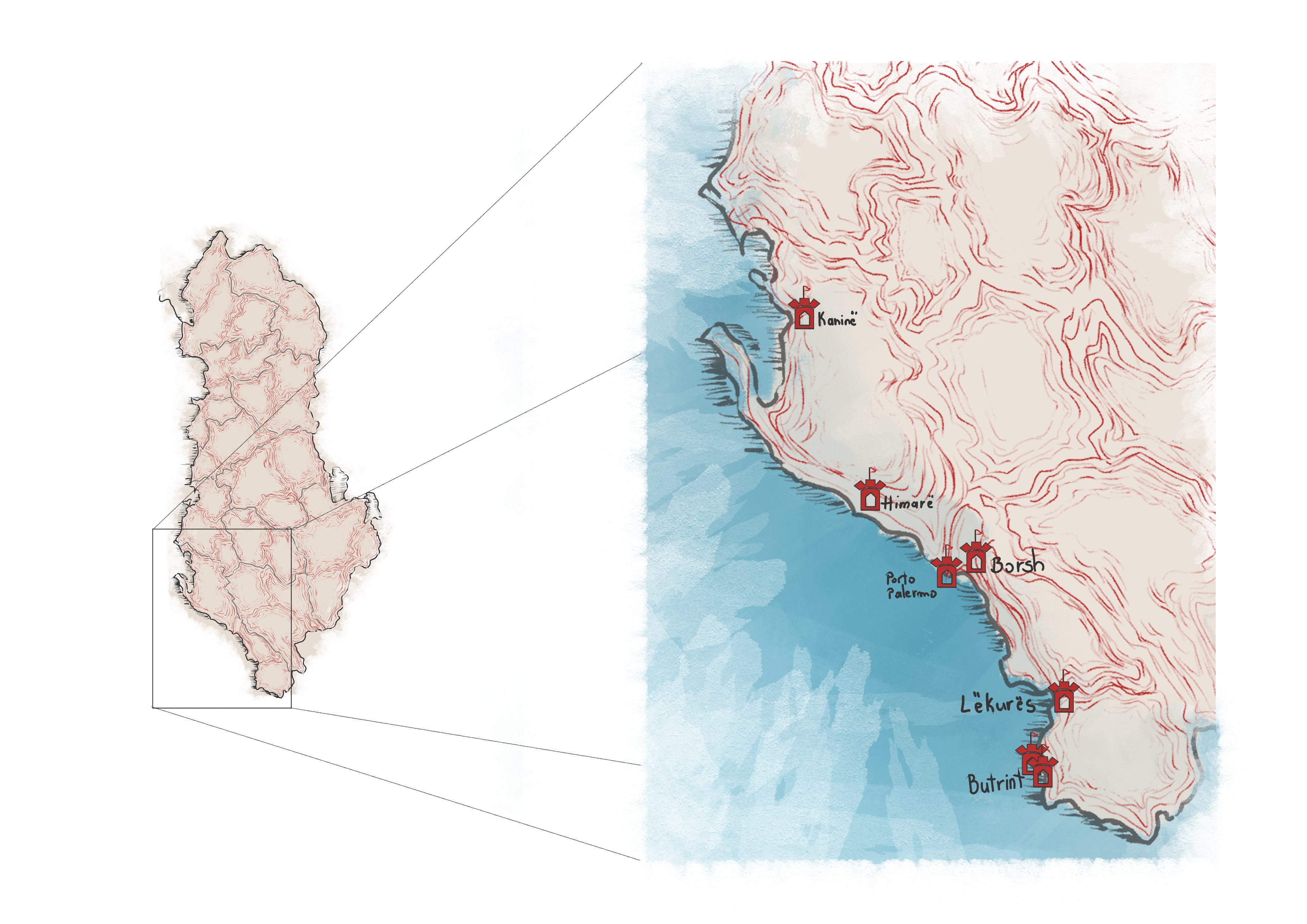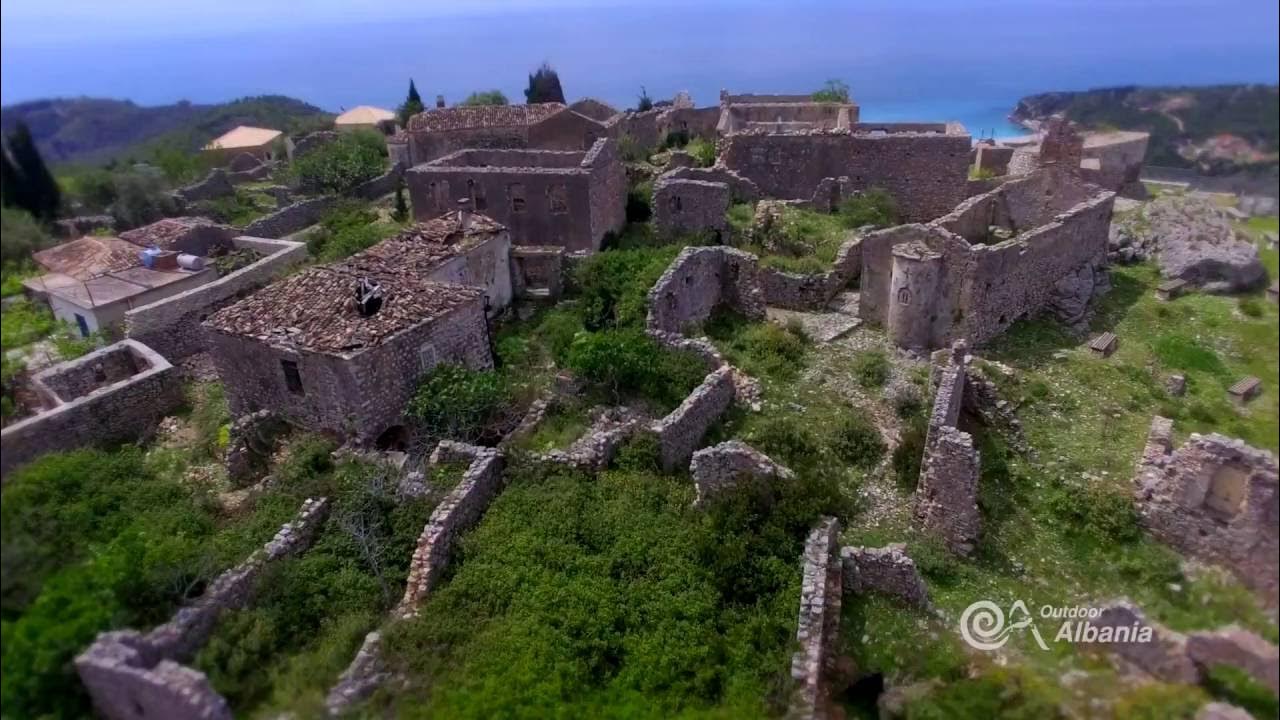Himara Castle

The castle has two entrance gates, one to the north and one to the south, which were closed at the end of the day. Within the castle walls coexist the medieval town with ancient ruins and contemporary buildings. There are houses, warehouses, cisterns, mills, shops, administrative and religious buildings, streets, squares, gates, etc. Among the religious monuments, we highlight the Episcopal Church located within the Hellenistic walls, believed to have been built on the foundations of a temple dedicated to Apollo. The Church of the Archangel Michael, one of the oldest churches within the walls, is situated in the northern part of the castle. The Church of St. Mary in the eastern part and outside the walls dates back to the 18th century, along with the Church of All Saints, which was first used in 1775.
The Himara Castle is bordered by two canyons: the Visha Canyon to the northwest and the Kole Midhar Canyon or stream to the southeast. It is also known as Barbaka and is built on a rocky hill near the town of Himara.

Himara Castle has been inhabited for 3,500 years. In the Middle Ages, during the Byzantine era, there was a small but powerful fortified town built on the ancient ruins of the castle, which also served as an administrative and religious center for all of southern Albania.

The castle has two entrance gates, one to the north and one to the south, which were closed at the end of the day. Within the castle walls, the medieval town coexists with ancient ruins and modern buildings. There are houses, storerooms, cisterns, mills, shops, administrative and religious buildings, roads, squares, gates, and more.

The castle functioned as an ancient town, a military fortress, and a residential center due to its strategic position, controlling the coastal road from Orikum to Butrint. In the 7th century, Himara Castle became the center of the Himara Bishopric, indicating its importance on the Ionian Coast. For this reason, the entire region, including the coast, Kurvelesh, the Vjosa River, and Tepelena, was named Himara.

The architectural ensemble of Himara Castle has been declared a cultural monument because it preserves traces from all historical periods. The large polygonal stone blocks are similar to the surrounding walls of Finiq, Butrint, and other cities in Kaonia from the same period, but there are also traces of construction from the Illyrian period, early and late antiquity, the medieval period, as well as signs of late urbanization.







